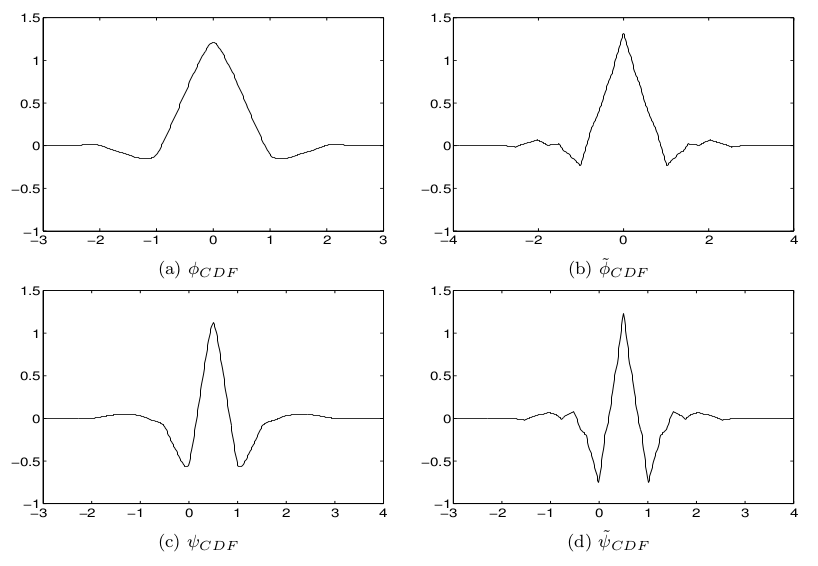| << Chapter < Page | Chapter >> Page > |
Tian and Wells [link] , [link] have constructed biorthogonal wavelet systems with both zero scaling function and wavelet moments. Closed form solutionsfor these biorthogonal coiflets have been found. They have approximation properties similar to the coiflets, and the filter coefficients are dyadicrationals as are the splines. The filter coefficients for these biorthogonal Coiflets are listed in [link] . Some members of this family are also in the spline family described earlier.
We have introduced several families of biorthogonal systems and their design methods. There is another method called a lifting scheme , which is very simple and general. It has a long history

[link] , [link] , [link] , [link] , [link] , [link] , and has been systematically developed recently [link] , [link] . The key idea is tobuild complicated biorthogonal systems using simple and invertible stages. The first stage does nothing but to separate even and oddsamples, and it is easily invertible. The structure is shown in [link] , and is called the lazy wavelet transform in [link] .

After splitting the data into two parts, we can predict one part from the other, and keep only the prediction error, as in [link] . We can reconstruct the data by recomputing the prediction and then add back theprediction. In [link] , and are prediction filters.
By concatenating simple stages, we can implement the forward and inverse wavelet transforms as in [link] . It is also called the ladder structure , and the reason for the name is clear from the figure. Clearly, the system is invertible, and thusbiorthogonal. Moreover, it has been shown the orthogonal wavelet systems can also be implemented using lifting [link] . The advantages of lifting are numerous:

Notification Switch
Would you like to follow the 'Wavelets and wavelet transforms' conversation and receive update notifications?